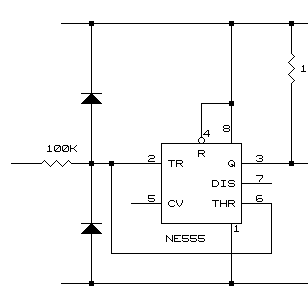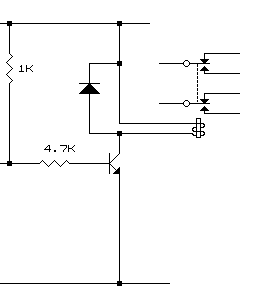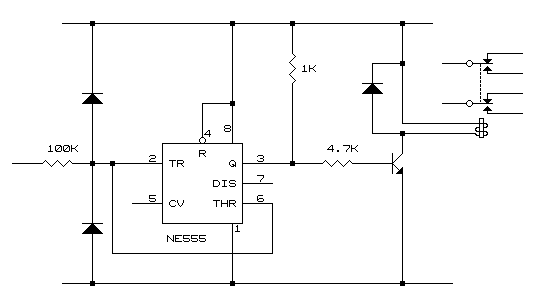|
1
|
this circuit is designed to "see" the positive voltage side of any voltage source and translates it into "ttl-compatible" levels, since the 555 is connected to the 5-volt supply and ground. to "see" the negative voltage side, connect the +5-volt supply of the 555.
|
| 2
|
principle of operation :
- positive voltage input is clipped at +5.6 volts and negative voltage input is clipped to -0.6 volt to prevent damage to the 555.
- when the voltage input is +5.6, pin #6 is higher than 2/3rd of the supply voltage and pin #3 will be at logic "0", and the open collector at pin #7 is conducting.
- when the voltage input is -0.6, pin #2 is lower than 1/3rd of the supply voltage and pin #3 will be at logic "1", and the open collector at pin #7 is non-conducting.
go to top next
|

|
|
| 3
|
principle of operation :
- this circuit configuration can supply about 30 ma at the collector of the npn transistor.
- note that the relay may be connected to 5 volts or to any voltage which is within the specifications of the transistor-driver.
- if the relay requires more current, this can be furnished by further amplification of the now available collector current.
go to top prev
|

|
|
| 4
|
it is most important to take note of the reverse-biased diode at the collector, and across relay. inductive circuits, like relays, produce magnetic lines of force when energized. when the energizing current is removed, the magnetic lines of force will collapse and induce voltage at the relay coil which is opposite to the direction of the driving voltage. at this point, the diode will conduct and prevent the high inductive kick (voltage) from damaging the solid state devices along its electrical path.
|

